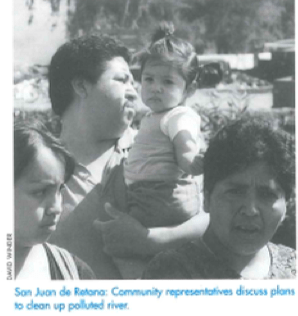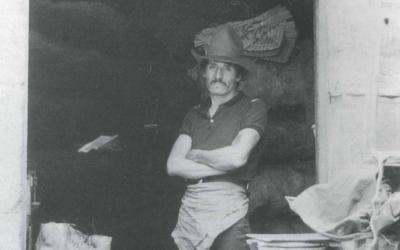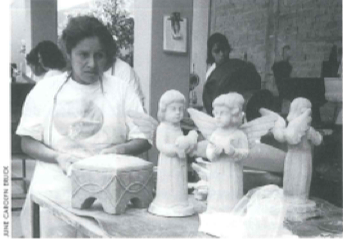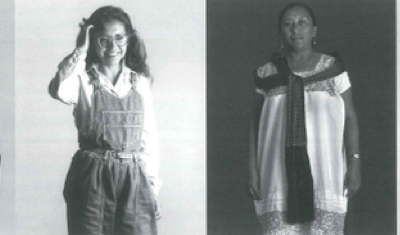Mexican Philanthropy Breaking New Ground

In a variety of ways, more than 3,000 non-governmental organizations (NGOs) throughout Mexico are serving communities. Some provide technical and financial support for community initiatives, while others assist in Mexico’s transition to more open and accountable government. Human rights and environmental NGOs have provided protection and support to otherwise voiceless groups. Many of these NGOs have mobilized significant volunteer support. Mexican NGOs have proliferated since 1960, and particularly in the 70s and 80s. In the 90s, however, we see the emergence of a new type of philanthropic organization: one with stronger roots in the community.
In the 60s, 70s, and 80s this expansion of organized civic activity was financed by European and North American funding (private foundations, church organizations, and some bilateral funding). In some cases the debt swap mechanism augmented donor contributions. With Mexico’s entrance into the OECD and NAFTA, much of this international funding was diverted to countries with a lower income per capita. NGOs therefore endeavored to bring greater professional expertise to their fundraising and to tap sources of local philanthropy. However, the few existing private foundations restricted support to a limited number of charitable causes, such as the care of orphans and the destitute. Corporate giving was focused, by and large, on support for cultural and athletic events, and was seen primarily as a public relations function.
In the 90s, civil society leaders, often working with progressive business leaders and occasionally supported by state government, created a new breed of community foundations with strong community roots. They saw the existing NGOs and community-based organizations as key partners in their quest to overcome poverty and inequality. They also saw themselves not as program implementers, but as conveners and resource mobilizers for others. There are now about 20 community foundations in Mexico working at both the state and city levels. To get a sense of how they work and what impact they are having, I have taken as an example the Fundación Comunitaria del Bajío, which serves the Bajío region of Guanajuato State, Central Mexico.
Fundación Comunitaria del Bajío
The Foundation, though it started operations in April 1998, formally came into being in October 1997, when the Guanajuato State Government, lead by Governor Fox, inspired a group of local business leaders to create a community foundation to raise funds to help Greater Irapuato. The region around Irapuato had benefited from the rapid development of commercial fruit and vegetable production and the growth of industrial and clothing assembly (maquiladora) plants. However, there was concern that more people living at or near the poverty line would detriment the whole community. The Foundation allowed local civil society leaders to promote effective partnerships among the government, business, and civil society sectors. This differed from a few years before, when a foundation would support a few charitable organizations. The Foundation was fortunate to obtain the services of Adriana Cortés Jimenez, a long-term resident of Irapuato and civil society leader, as the Executive Director. The Synergos Institute has been invited to support the new foundation as part of our efforts to nurture new approaches to community philanthropy throughout Mexico. Early this year, Synergos Institute founder Peggy Dulany and I visited Irapuato, a bustling city of almost 500,000 inhabitants with a central location in the fertile Bajío valley. We assessed the progress to date, the responses of those involved, and the challenges ahead.
Move beyond the core of Irapuato to the periphery, and you see stark contrasts between the gated communities where the owners and managers of the local companies live and the rapidly growing low-income communities that are home to recent migrants.
The Foundation could have launched a grantmaking program to support the NGOs working in Irapuato. Instead, it undertook a survey of all governmental and non-governmental programs. This mapping permitted the identification of a set of priorities and areas of critical need and highlighted the lack of coordination between existing initiatives. As an organization without a vested interest, the Foundation was able to convene sectors, including academic institutions, around a common set of priorities. This set in motion a series of meetings, involving all the major service delivery organizations. The outcome was four Foundation-led networks that are doing much to improve the quality of service to the community and to develop new joint initiatives involving civil society organizations and the government. They focus on the needs of children, families of migrant workers, drug addicts, and persons with disabilities.
The survey also enabled the Foundation to identify neighborhoods with the most social and economic problems. The Foundation selected one of them, San Juan de Retana, a densely packed, relatively new settlement of over 30,000 inhabitants, for an intensive local development program. A 1998 survey revealed that 85% of the population had an income less than $300 a month, 53% below $100.
Local community leaders, civil society organizations, and government institutions engaged in discussions in San Juan to determine a set of priorities and an action plan. They decided that the Foundation would help create an independent non-profit organization (PADIC or Poliasociacion para el desarrollo integral comunitaria, A.C.) to coordinate the efforts of government, NGOs, universities, the business sector, and civil society in the San Juan neighborhood.
During our February visit, Peggy Dulany and I experienced the results of this new initiative. It became clear to us that Cortés Jimenez plays a critical role in encouraging all parties to work together. As a widely respected community activist she understands the local problems and personally knows many community leaders and individuals important in the government and non-government programs.
Walking around San Juan with Cortés Jimenez, we met a variety of community members and program staff. The integrated education program has achieved greater dialogue between teachers and parents. At one of the poorest primary schools, parents and teachers enthusiastically showed us the nearly completed school dining room and kitchen. With these facilities, support from the government and business community, and sweat equity from the parents, there will be a daily cooked lunch for students. The program will be expanded to all the primary schools and should have a real impact on levels of nutrition. Community members spoke of other new education and health initiatives coordinated by PADIC with the support of the foundation. They mentioned efforts to tackle drug and alcohol abuse through a combination of treatment and prevention. They said that the combination of parent, teacher, and child counseling, youth sporting competitions, and the production of educational materials is starting to have an impact. Cortés Jimenez told us that she involved seven government institutions (federal, state, and municipal), 11 business associations, 7 NGOs, 13 newspapers or TV and radio stations, 6 professional associations, and all the education institutions in this coordinated program.
Next, we met with a cross-section of concerned citizens by the edge of a river that had become an open sewer flowing through the community. The Foundation, the local government, and a citizen’s committee have developed plans to build a water treatment plant. Some women suggested that they would apply constant pressure to ensure the work was carried out on schedule, indicating that officials and the Foundation would be held accountable.
Our next stop was a local bakery run by a cooperative of six women. The women explained that they organized themselves to request a loan from the state government to purchase equipment, and had received technical assistance from PADIC. The enterprise produces highly nutritious bread (enriched with soya and amaranto) and cookies for locals. The women spoke of improving their marketing and their modest facility. Once the loan is repaid they will become the owners of the bakery. PADIC staff told us of other community-based enterprises in the pipeline.
Overall, we sensed that things had changed as a result of the Foundation and the leadership of Cortés Jimenez. This wasn’t business as usual. Local people are being given more resources to solve those problems that they, themselves, have decided are the most urgent. They are also willing to contribute resources. In an opinion survey conducted in San Juan last year, over 50% of the respondents offered to volunteer in one or more community programs (health, education, youth, and women’s programs being the most popular).
We also found that the Foundation had allowed young NGO staff members and government officials to have greater impact by working in the context of a more effectively coordinated effort. The Foundation has been a catalyst to mobilizing energy, skills, and resources around the needs of the community. Cortés Jimenez and the Chair of the Board, Gustavo Alonso Zanella Schiavon, have shown particular skill in bringing partners together around the table and coming up with joint solutions. In doing so, they are overcoming the prevailing practice of the past when government was expected to solve all the problems.
Outside the San Juan community, the Foundation is spearheading a new initiative to support the families of migrant workers. The State of Guanajuato has one of the highest rates of migration to the U.S., and also in recent years to Canada. The Foundation has identified six rural communities close to Irapuato and has put together a cooperation of government organizations, NGOs, and academic institutions to provide programs in health, environmental issues, education, and income generation. The Foundation is hoping to build relationships with the communities of Guanajuato immigrants in the U.S. (there are over 40 nonprofit clubs known as Casa Guanajuatenses) and involve them as partners in social projects in their communities of origin.
While $7.5 million has been raised and channeled to the community in less than three years, more needs to be done. Both national and transnational companies operating in the Bajío region, particularly in exporting industries, could be contributing more assets and resources to the Foundation. However, its work is attracting attention in other parts of the state of Guanajuato, Mexico and Latin America. Philanthropy doesn’t have to start from the interests of the donor but can build from the diverse concerns and needs of the community.
Fall 2001, Volume I, Number 1
David Winder is the Director of Global Philanthropy and Foundation Building Programs at the Synergos Institute in New York. Synergos conducts research on the foundation sector in Latin America and provides technical support to foundations in Mexico, Brazil and Ecuador.
Related Articles
Editor’s Letter: Mexico in Transition
You are holding in your hands the first issue of ReVista, formerly known as DRCLAS NEWS.
Over the last couple of years, DRCLAS NEWS has examined different Latin American themes in depth.
The View from Los Angeles
In 1999, on returning home to LA after four years at Harvard and in the Boston area,I ascended to the city of Angels for the annual gala dinner of the premier civil rights firm: the Mexican American…
What’s New about the “New” Mexico
On July 2, 2000, Mexican voters brought to an end seven decades of one-party authoritarian rule. Just over a year later, Mexico continues to feel the repercussions of this momentous victory…




